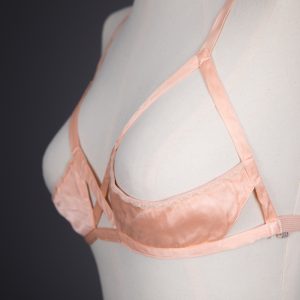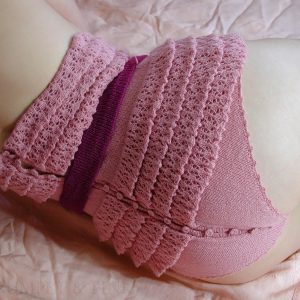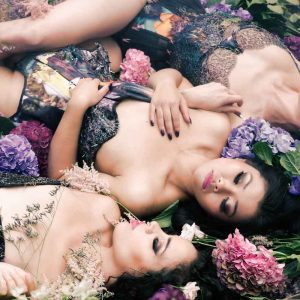Lingerie Design Challenges: Ready-To-Wear vs. Bespoke
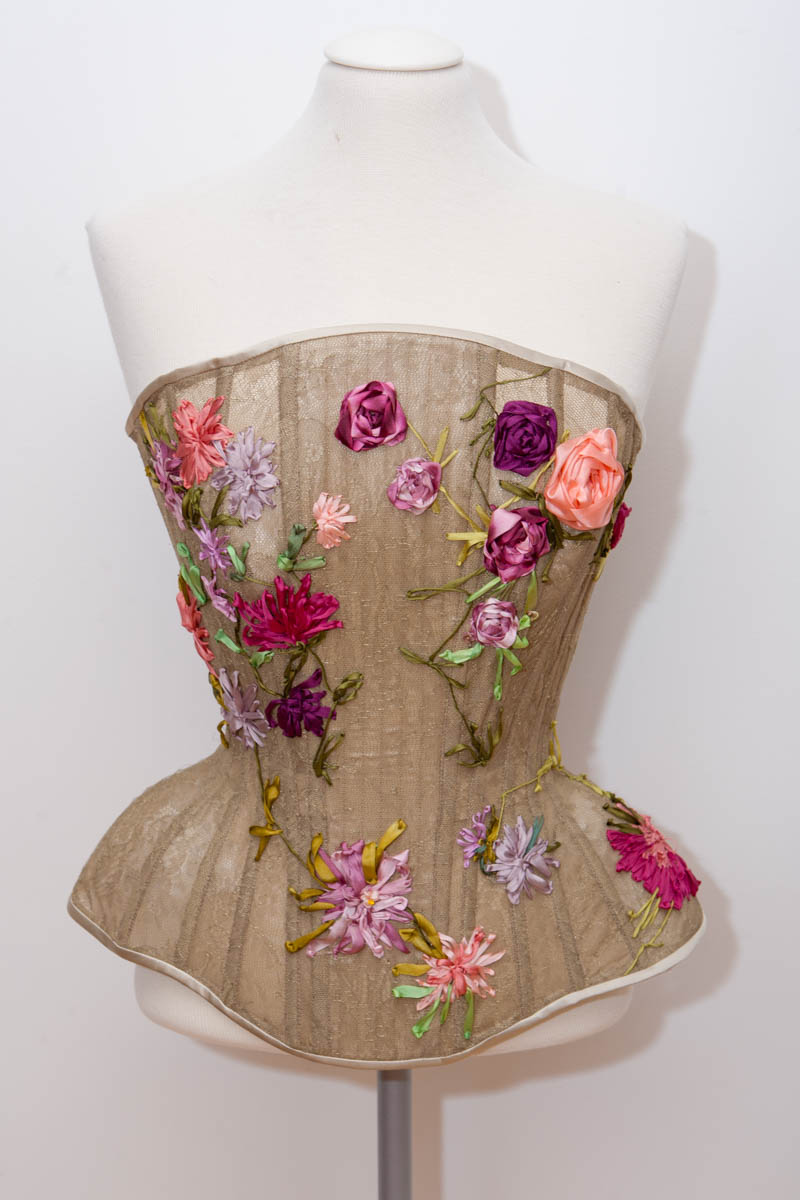
A bespoke corset in fine French lace and freehand silk ribbon embroidery. This corset shape had four fittings, and the final garment took several work days to stitch. Design by Karolina Laskowska.
Before getting into the nitty gritty of what the differences are between designing for ‘ready-to-wear’ and ‘bespoke’ lingerie, it’s important to first nail down what these phrases actually mean.
In a world dominated by fast fashion and half-truth marketing, a lot of the technical terminology around clothing has had its meaning diluted and distorted. This is particularly true of the language around luxury fashion, which is often co-opted by fast fashion.
What is Ready-to-Wear in Lingerie Design?
Ready-to-wear (or RTW, sometimes also referred to as 'off the rack') refers to designs generally created on a production line and made in a fixed size range. The exact size range varies by brand. Sometimes ready-to-wear garments can also be made to order, using patterns and designs already developed. Although it may be possible for RTW garments to be altered by a tailor, they are often cut to give a good enough fit across the size range of that brand’s customer base.
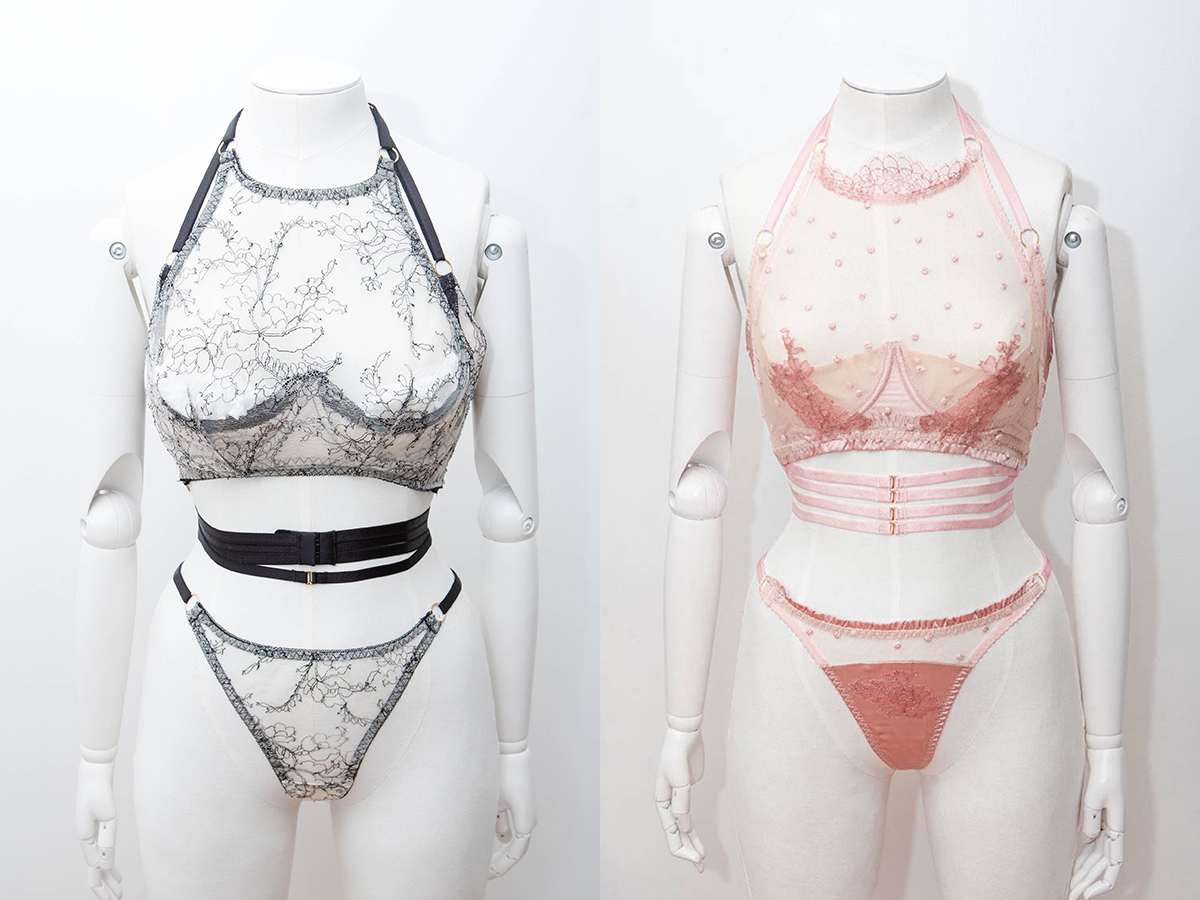
A comparison of the initial fitting toiles and final garments for a bespoke bridal lingerie set. Design by Karolina Laskowska.
What is Bespoke in Lingerie Design?
A Bespoke garment traditionally refers to a garment that has been made handmade specifically for - and fitted directly to - an individual person. The processes involved in creating a bespoke garment are incredibly different from RTW, as is, unsurprisingly, the price point. True bespoke clothing is often very expensive, and is perhaps the highest end of the clothing market.
However, the term ‘bespoke’ is regularly misused by brands. It is fairly common to see ‘bespoke’ used to refer to textiles like embroidery that are exclusive to a brand. It can also be further confused by the term ‘custom’, which is similar but not identical in meaning to ‘bespoke.'
A custom garment refers to something that may have minor alterations for the client, such as a fit modification, different fabric, or varying design details. However, it hasn’t necessarily gone through the laborious fitting and creation process of a bespoke garment.
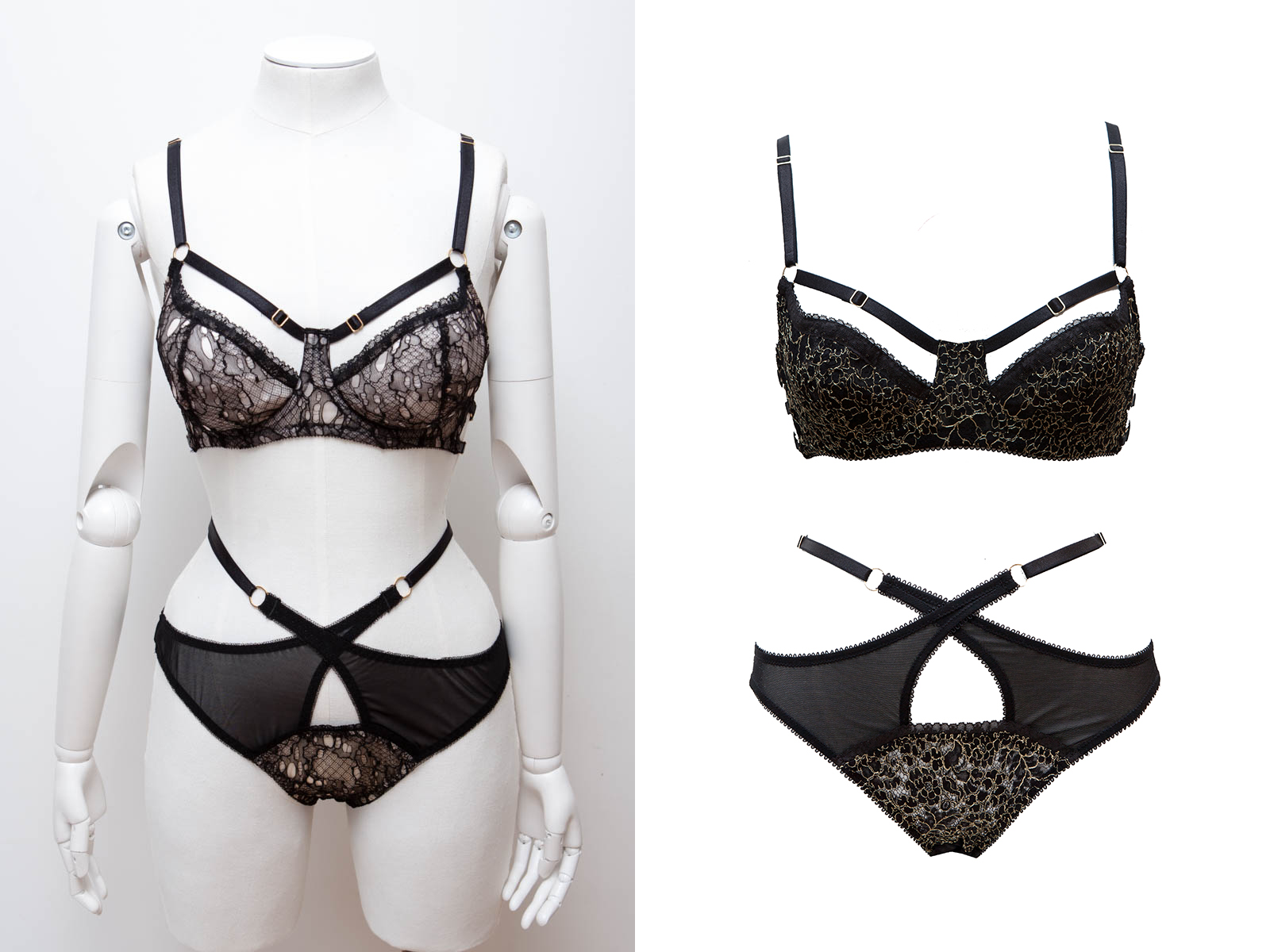
The lingerie set on the left is 'custom' rather than 'bespoke', as despite the client's unique choice of fabrics, it uses the same patterns and technical specifications as my 'Ara' RTW range on the right. Design by Karolina Laskowska.
Comparing the Ready-to-Wear vs. Bespoke Process
When I first began my lingerie brand a decade ago, my main focus was ready-to-wear collections. I mostly made garments to order, with occasional small customizations for customers. However, the main focus was on a core collection of designs.
In 2018 though, an international move forced me to reconsider my business model. Steeply rising business costs and border challenges made it near impossible to keep making a living on these RTW collections. So I moved my focus to bespoke design.
Although I’m still designing and creating lingerie, the difference in the processes is vast. In this article, I’m going to share a little about the biggest differences between ready-to-wear and bespoke in practice.
Budget
RTW design is heavily budget driven. There is always a focus on the designs hitting a particular cost per garment, so that the item is as profitable as possible. It can be difficult to predict what will sell in advance, so costings are important to minimize risk, and to hit relatively healthy profit margins. (And it’s important to note that lingerie has some of the smallest profit margins in the entire clothing industry!)
At most market levels, be they fast fashion or luxury, there is a band of prices products have to hit, so designers must be careful to fit within that.
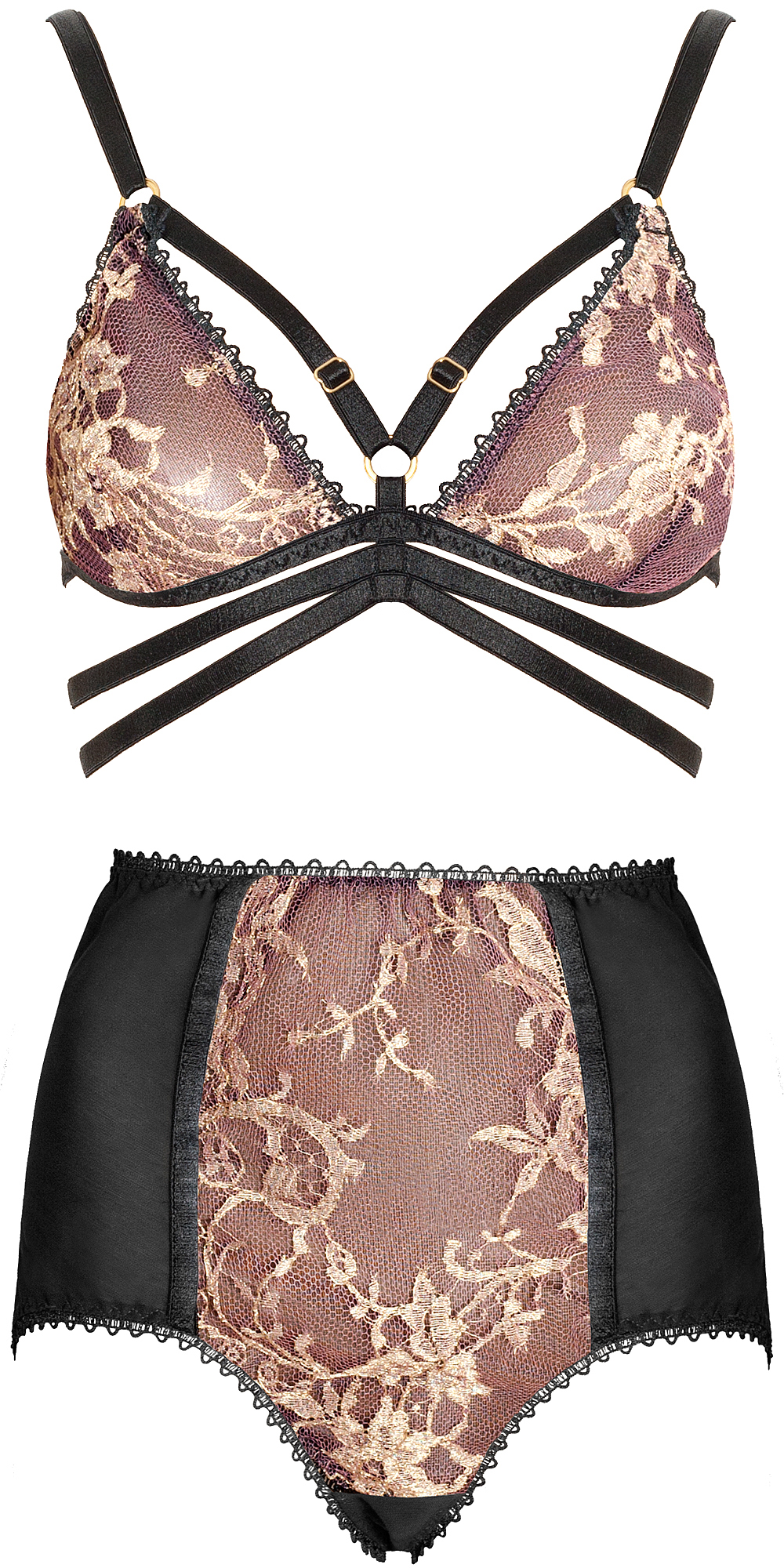
The design process of my first factory produced range was heavily dictated by costs. I wanted to use beautiful French lace, but could only afford to order a few metres. Mixing cheaper stretch mesh panels into the designs meant I could justify the cost of the fancy lace per garment. 'Ela' lingerie set from AW13 by Karolina Laskowska.
When I design a RTW range, I must carefully consider at least three things. One, how much of a particular textile will be used in each design. Two, if the trim colour is something I can afford the minimums of (certain colours carry minimums of 4000 metres or 13,123 feet, which a business my size cannot afford). Three, that the garment can be stitched quickly enough to still generate a profit.
If I am using a limited edition deadstock fabric, then I must design and cut carefully so that there is enough of the textile for the production run in question. Deadstock fabrics are typically fashion industry leftovers. In this instance, I am referring to the fabrics that are leftover from another larger brand, who has overordered for their production runs.
Most fabric mills have high minimum orders, which in turn forces their customers to order surplus to requirements. I deliberately seek out these leftovers from larger brands, because it's a more sustainable practice than constantly buying newly produced textiles. Though this practice does in turn produce its own challenges, because there are usually only small amounts of the fabric available to use.
Although there is still some creativity involved, designing for ready to wear is heavily driven by mathematics. You can create the most beautiful garment in the world, but if the price isn't right, it's not going to sell. If the garment doesn't sell, then it doesn’t function as a commercial product. (As an aside, it’s also important to note: a minority of garments are created without the intention to sell!)
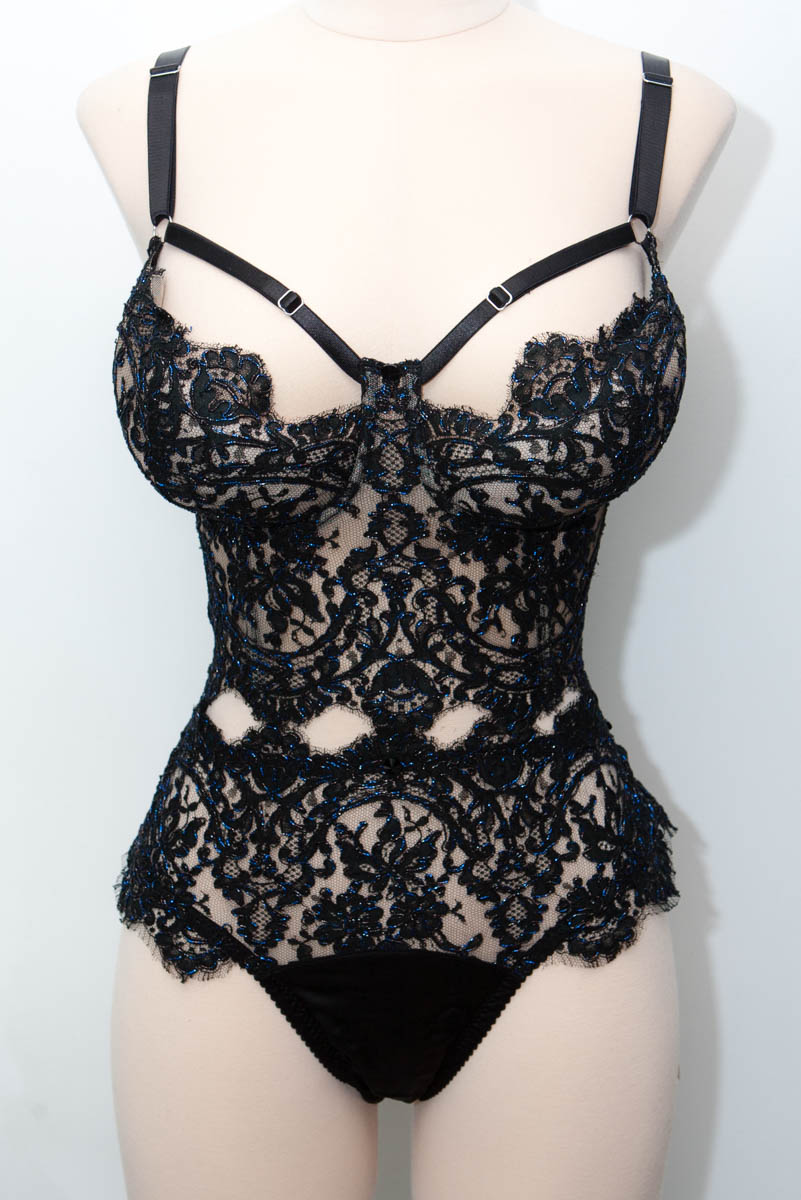
The client's budget for this bespoke lingerie set allowed me to use the expensive scalloped edge of this fine French lace without worrying about cutting costs, making it possible to match the pattern at every seam point. The use of a fine lace's scalloped edge in a design can quickly cause the garment's cost to rise, and using it in RTW design needs very careful consideration and cutting. 'Mina' bespoke lingerie set by Karolina Laskowska.
Whilst bespoke clients may have a particular budget for their garment, it is almost always a much higher one than the individual cost of a RTW garment. Of course, it has to be. There are different scales in play, and the cost of creating a single, one-off garment is much higher than a production run.
That difference in budget can cover things RTW may never be able to include. Lavish pearls, hand-painted textiles, and hand-stitched lace appliqué are some of my favourite techniques, and are completely at odds with the realm of RTW. The budget for bespoke projects can open doors to fantasy lingerie couture, where garments are wearable art.
Fit
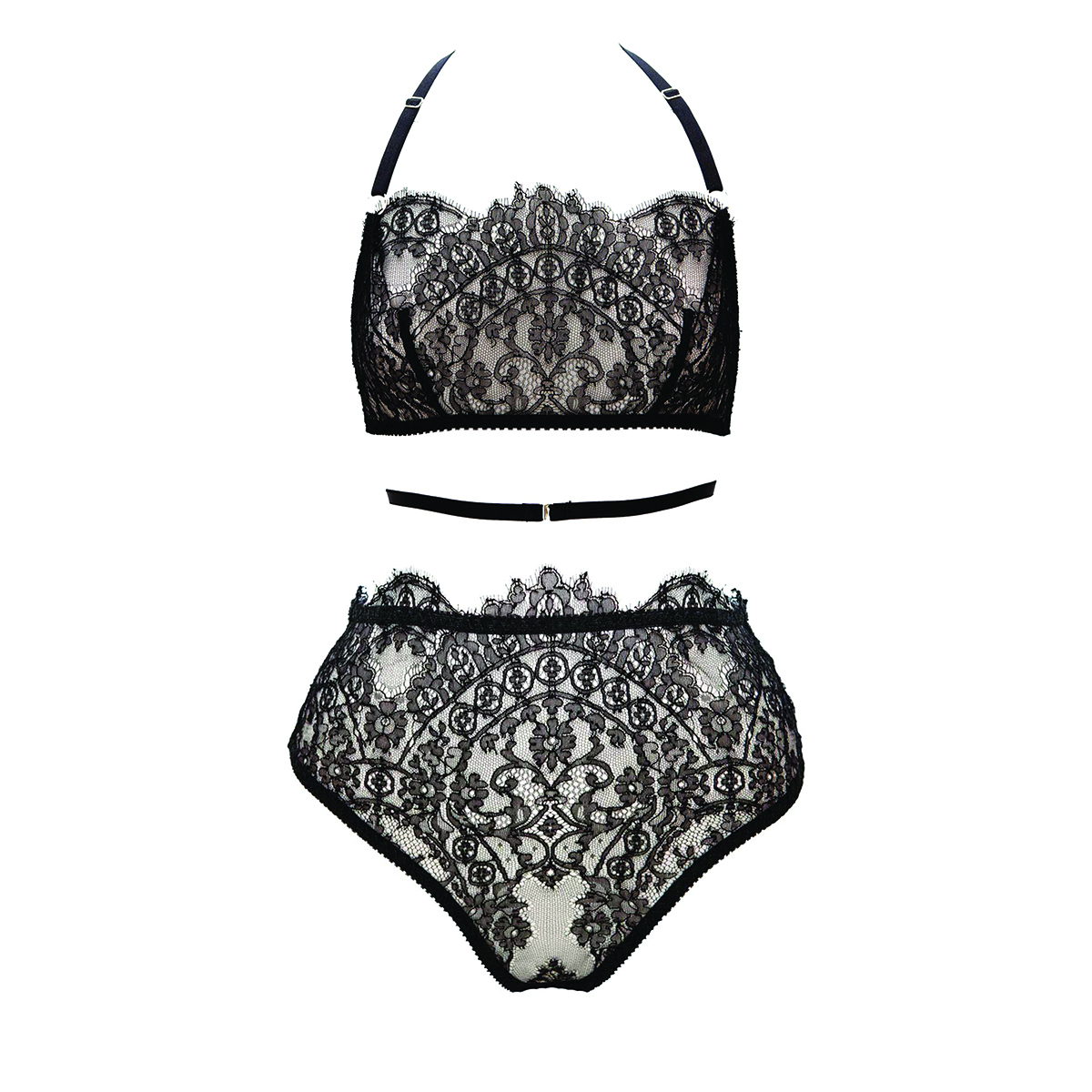
In previous RTW collections, I have tried to include fit flexible styles like soft bralettes. The more structure and tailoring that a garment has, the less likely it is to fit a wider audience. 'Freja' lingerie set from the 2017 'Taakeferd' collection by Karolina Laskowska.
For RTW, the focus is on a ‘good enough’ fit for a broad client base (although every brand has its own fit idiosyncrasies). It’s simply not possible to get a ‘perfect’ fit for everyone. Human bodies are just too diverse for any garment design to be able to fit everyone well. And honestly, most people are happy with a ‘good enough’ fit when it comes to structured garments like bras. As long as the bra is relatively comfortable and provides a reasonable silhouette, it fulfills their needs well enough.
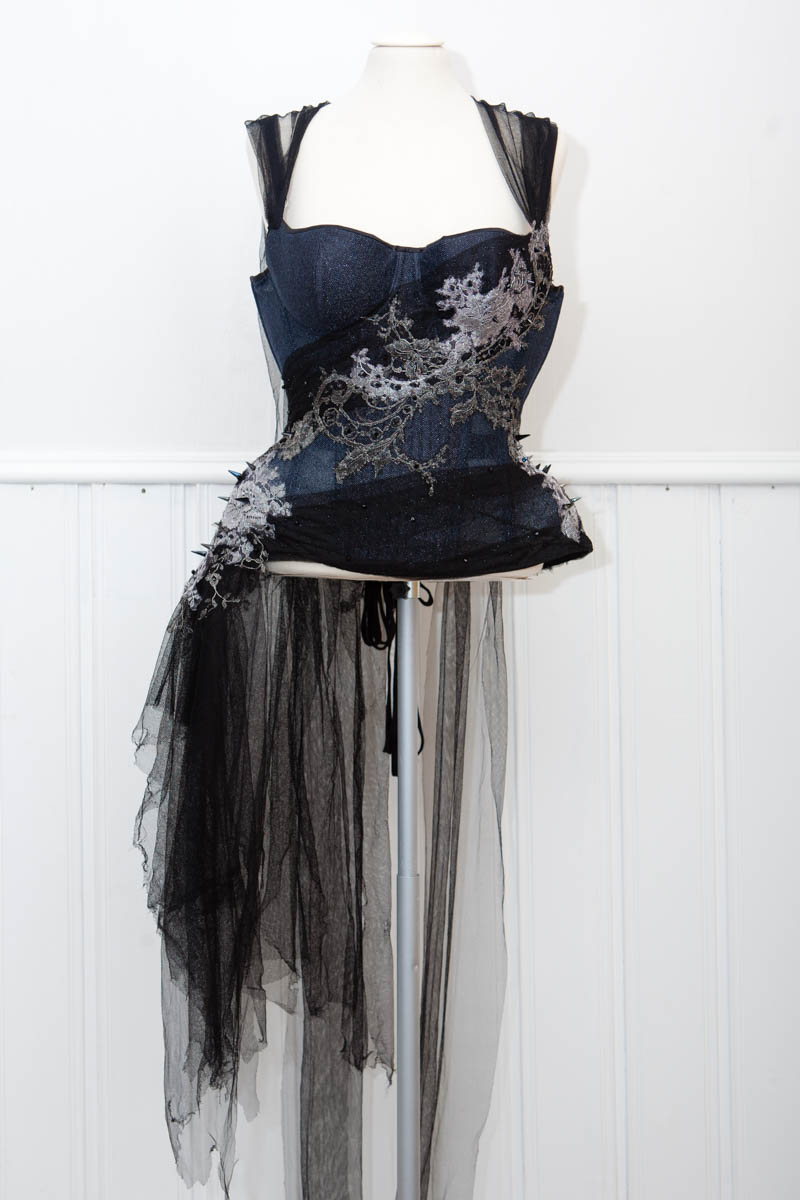
Cupped corsets have such unique fit concerns that I would not ever consider offering them on a RTW basis. This bespoke piece required multiple distance fittings to get the perfect fit for the client. 'Maia' bespoke corset by Karolina Laskowska.
For some people though, fit is of the utmost priority. That focus further narrows when the individual is buying something very expensive. If a garment is being made specially for you, to your personal specifications, then it’s not unreasonable to want a perfect fit!
This is one of the major differences between creating ready-to-wear and bespoke. Bespoke allows the maker to tailor a garment to the individual client’s body. This often involves several fitting sample garments (also known as 'toiles') being made for the client to try on, and then adjusting the pattern each time, until the client is satisfied.
Bespoke fitting is time consuming (particularly if done over a distance), but for some customers, completely worth it. It also allows for garments that are too complex in their fit requirements to ever work for RTW collections. For example, I would never offer a cupped corset in an off-the-rack scenario. The combination of fitted waist, torso length and bust shape just make it too challenging. But it's an ideal item for a bespoke client.
Size
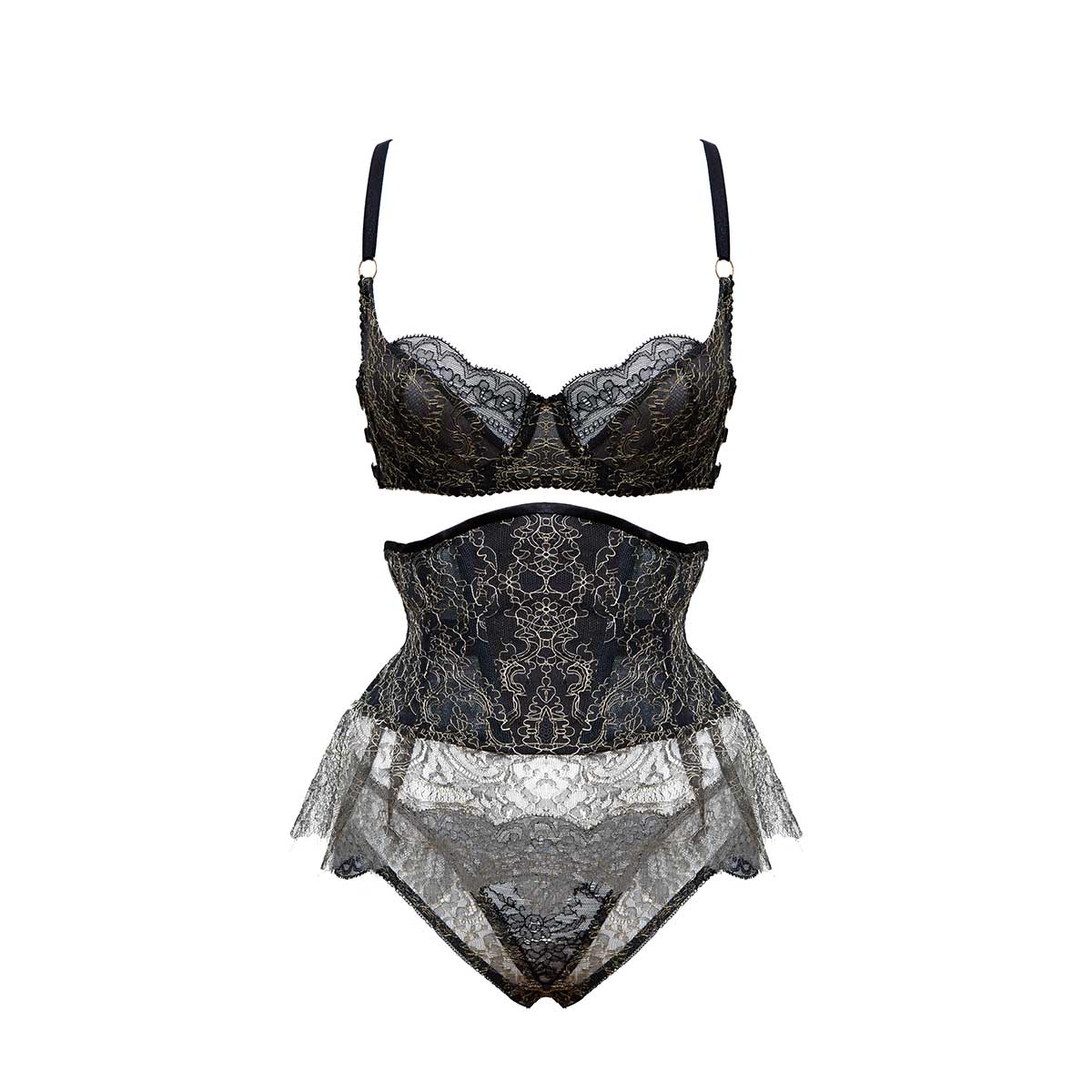
When I released this collection, the largest size that I could offer in this bra was a 30FF/32F/34E/36DD. At my business' size, it simply wasn't possible to invest in the additional components and development work required for a size expansion. It has taken me several years to invest in materials and develop new cup sizes in this single bra shape, and the collections still aren't quite ready to release. 'Hecate' lingerie set by Karolina Laskowska.
No RTW range can cover every size. This is particular true in garments as complex as underwired bras. The development costs of underwire bras are immense compared to almost every other type of garment in the fashion industry. There are also more size variants than any other garment. Even the largest lingerie brand in the world couldn’t offer every single bra size in every style they offered (though that isn’t to excuse many of the large corporate brands who can offer more size diversity, and just choose not to).
For an independent designer, expanding sizes gets even more challenging. That level of development, the specialist components, and the increase in production size is something that they often simply cannot afford, even if they have the best intentions.
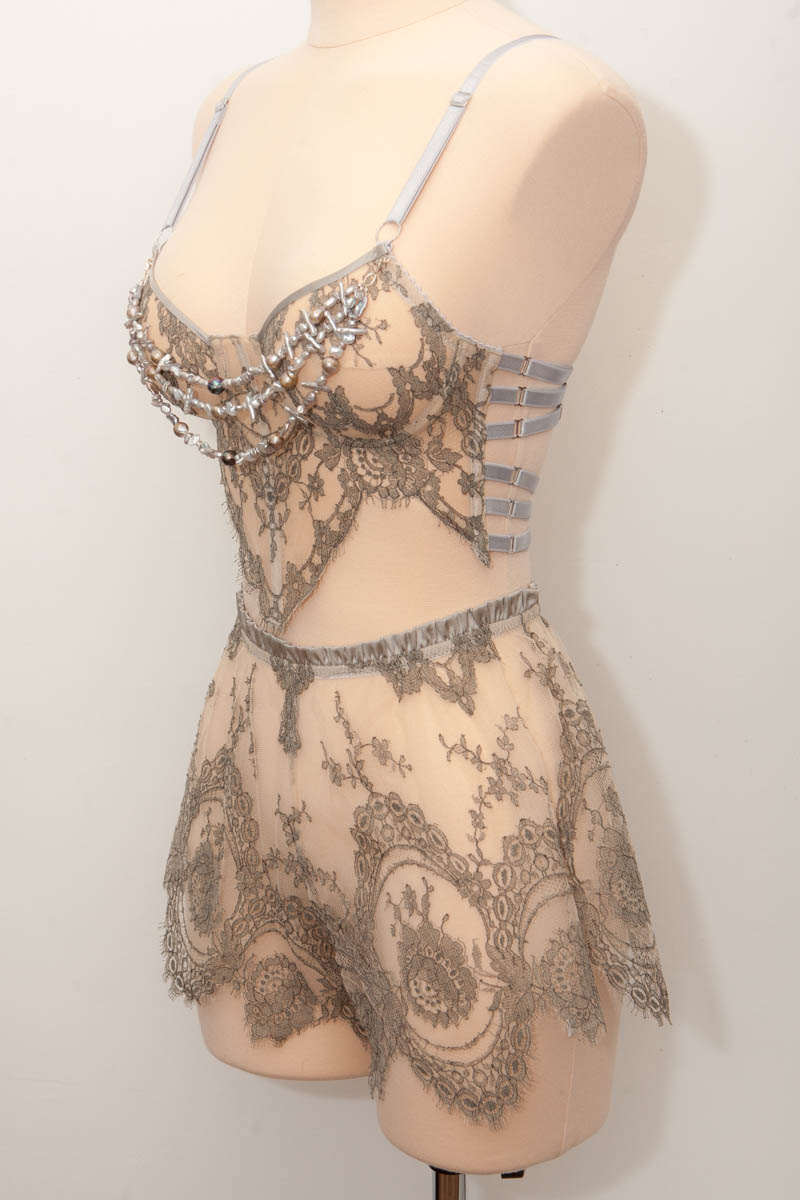
To create the final bra for this bespoke set, 5 fitting bras had to be created, each with subtle alterations of wire shape, placement and cup volume. Design and photo by Karolina Laskowska.
Bespoke removes size barriers. Through my bespoke service, I can create lingerie for any size. The development of the garments is focused entirely on the individual client, from the specifics of the design to the actual fit. The processes involved can be applied to any body shape.
Materials/Sourcing
RTW covers a wide range of business scales, from indie makers sewing at home to the largest fashion corporations in the world. But one generalization about RTW collections is that supplies are generally ordered in bulk, and the collections designed around materials that are available. In turn, suitable materials are limited by cost and quantity, and must hit the specific profit margins and production size of that brand. Frequently, the design is done after all of the materials have been sourced.
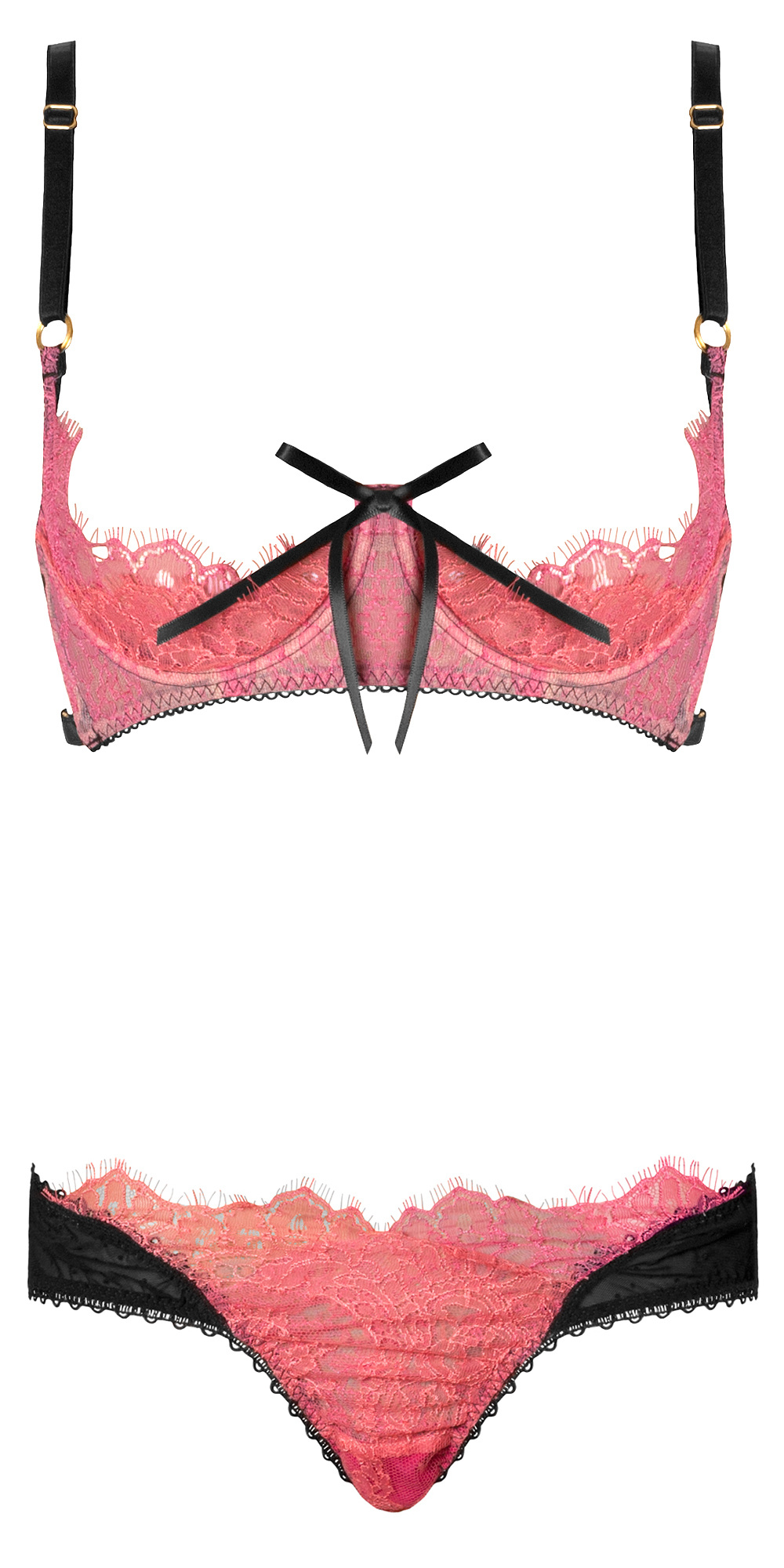
When designing my SS15 collection, I was only able to afford black or white trims due to the manufacturer's minimums. This meant that any colourful designs had to use contrasting trims. 'Liliana' set from SS15 by Karolina Laskowska
One of the most significant factors of sourcing for small designers can be minimum order quantities. This refers to the minimum order size set by a manufacturer, and can be challenging to access for smaller businesses.
One of the most obvious examples of this can be trim colours. You may notice that most independent lingerie designers tend to stick to black or white trims, as they’re the only shades they can consistently access and afford. The fabrics for a ready-to-wear collection also have to be ordered up front, which incurs a certain amount of risk. After all, as a designer, you have no way to predict if that range will actually sell.
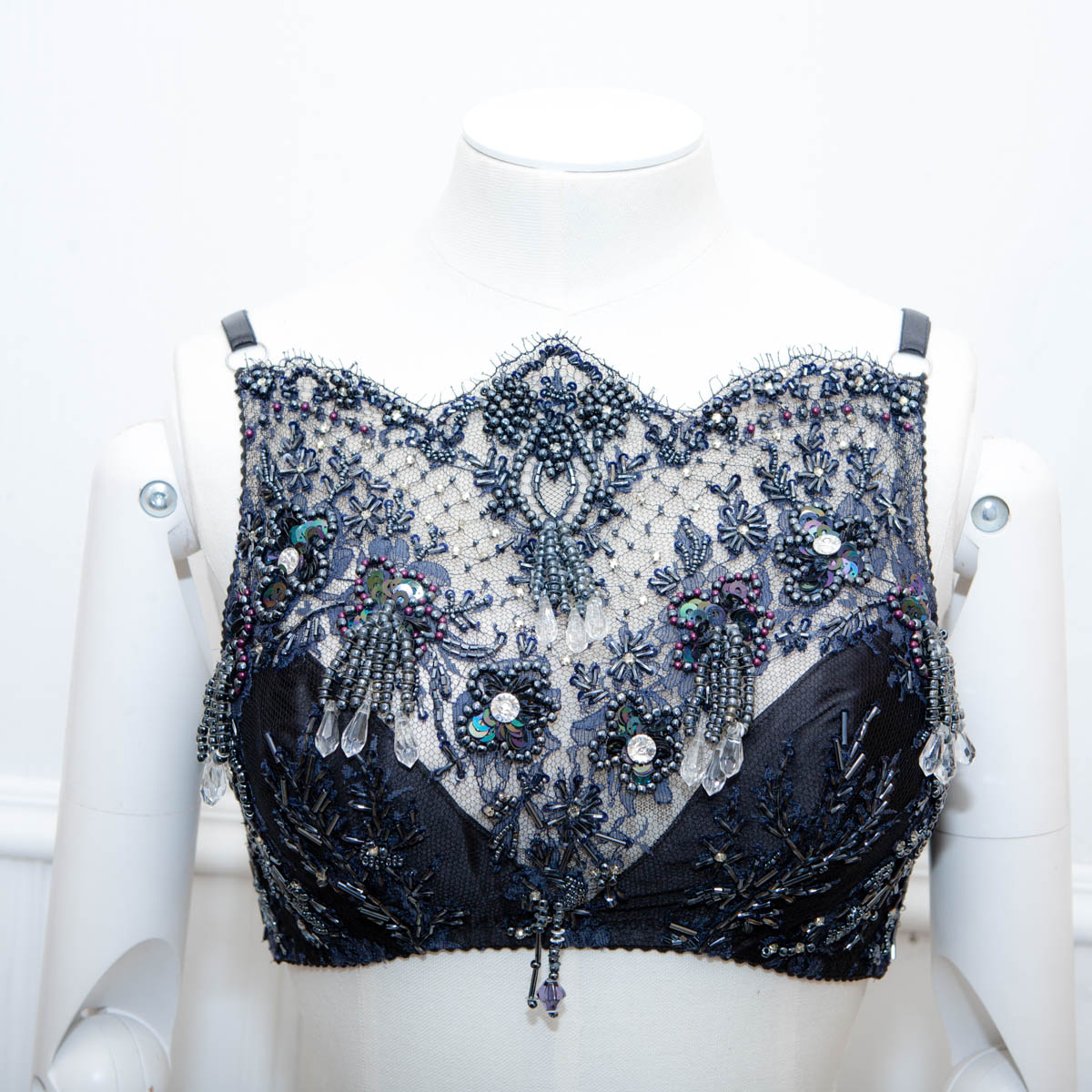
The intricately beaded lace for this bespoke bra cost around $750 per metre before import taxes. For a small brand, using such an intricate and expensive textile for RTW design would represent an inaccessible level of investment, in both fabric and labour costs. A bespoke commission removed these barriers, and it was an absolute privilege to create with such a special textile. Bespoke bralet by Karolina Laskowska.
Sourcing for bespoke can be challenging in different ways. There's certain specialist technical materials that can't be bought in small quantities, so you have to maintain a certain amount of fabric stock inventory at all times. This can be a huge initial investment. Because you’re using such small scales of materials, you cannot access the discounts offered in bulk orders, so the cost per metre for each fabric and trim is much higher.
However, this is part of where the much higher budgets for bespoke creations come into play. An exquisitely hand beaded French lace may cost over $1000 a metre. But if it’s the dream textile of that client, they understand the costs involved and are happy to pay for that beauty and craft.
Working on such a small individual scale also means that the client will have access to textiles that aren’t normally feasible for RTW design. Think small pieces of exquisite vintage lace, or couture silk prints that are just waiting for the perfect project. There are so many stunning materials and techniques that just aren’t suitable for RTW ranges, but bespoke design creates the perfect platform to showcase these.
Details
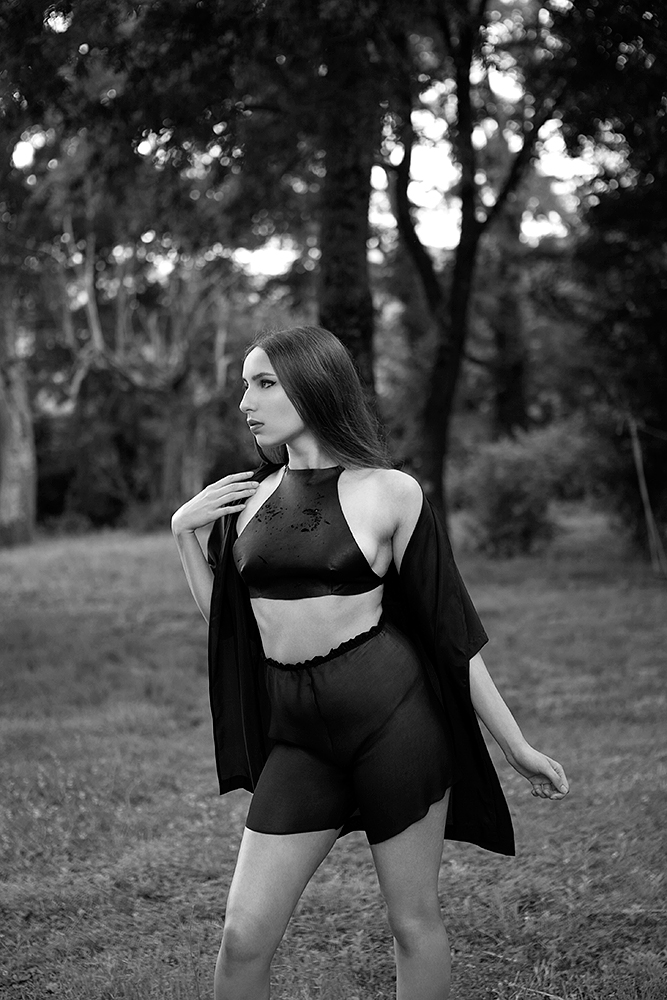
Although I still love the designs from my 2015 'Obscura' range, it was a commercial flop. The tiny French seams, silk bindings and textural leather grain that were the selling points of these designs just couldn't be seen or understood in the ecommerce photos. Design by Karolina Laskowska
Creating successful RTW usually means that you have to focus on obvious design, particularly if the garments are largely going to be sold online. The product has to be something that can be demonstrated well through photography, and small details can easily be missed in this medium.
Small scale prints, luxurious garment finishing, textural details…it’s incredibly difficult to capture these in a way that is enticing enough to sell on photos alone. I’ve made mistakes in the past with designs that just didn’t have enough impact in photos. People loved them and bought them in the flesh, but online they were just ignored.
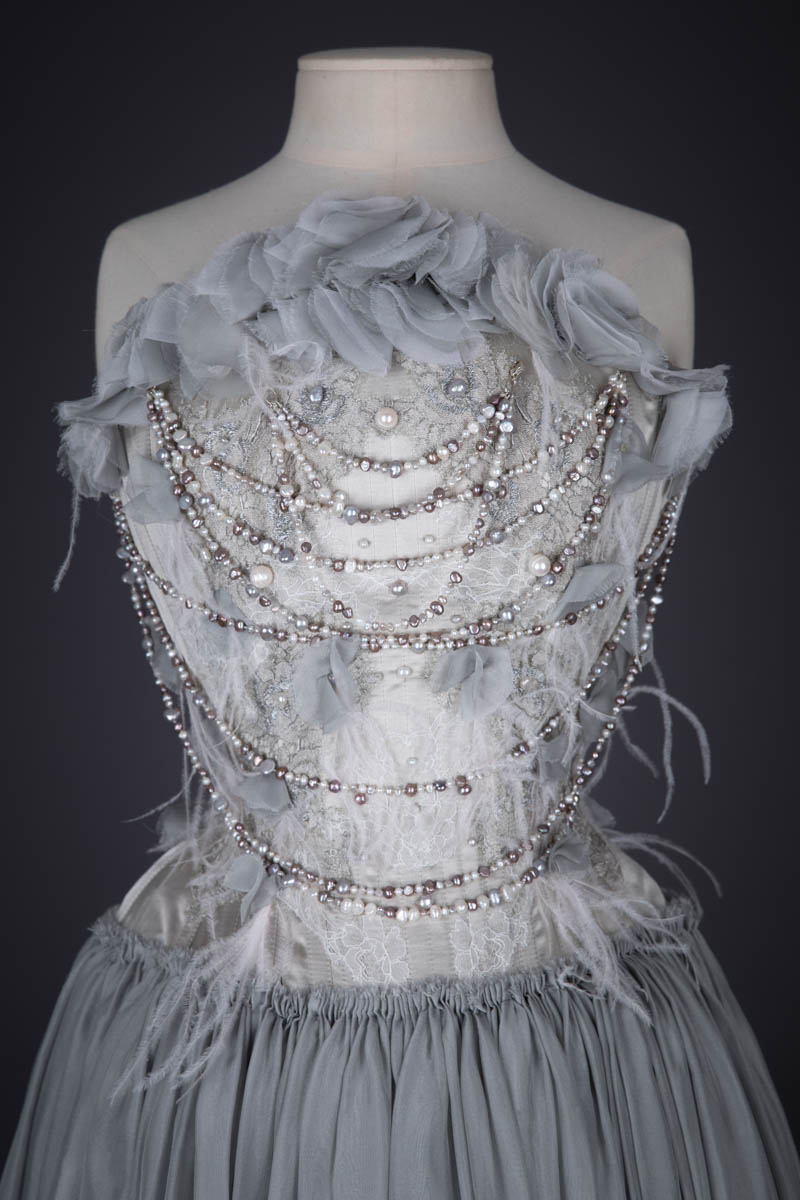
This bespoke wedding gown is embellished with numerous details that simply don't come across in photos, such as iridescent opal beading, and textural silk flowers and ostrich feathers that move beautifully when worn. The focus was on creating a piece that was a joy when worn, using techniques and materials that would never be possible in RTW. Wedding gown by Karolina Laskowska, photography by Tigz Rice for The Underpinnings Museum.
None of that matters when it comes to a bespoke creation though. The focus is on creating a beautiful experience for the client, and that means that you can focus on the details they love and that can be appreciated in person, such as beautiful interior finishing or textiles that can be challenging to photograph.
There’s also scope for details that may photograph well, but are just too impractical or time consuming for RTW. Some of my favourite commissions have involved freshwater pearl jewellery, ostrich feather plumes, and encrusted glass spike beading.
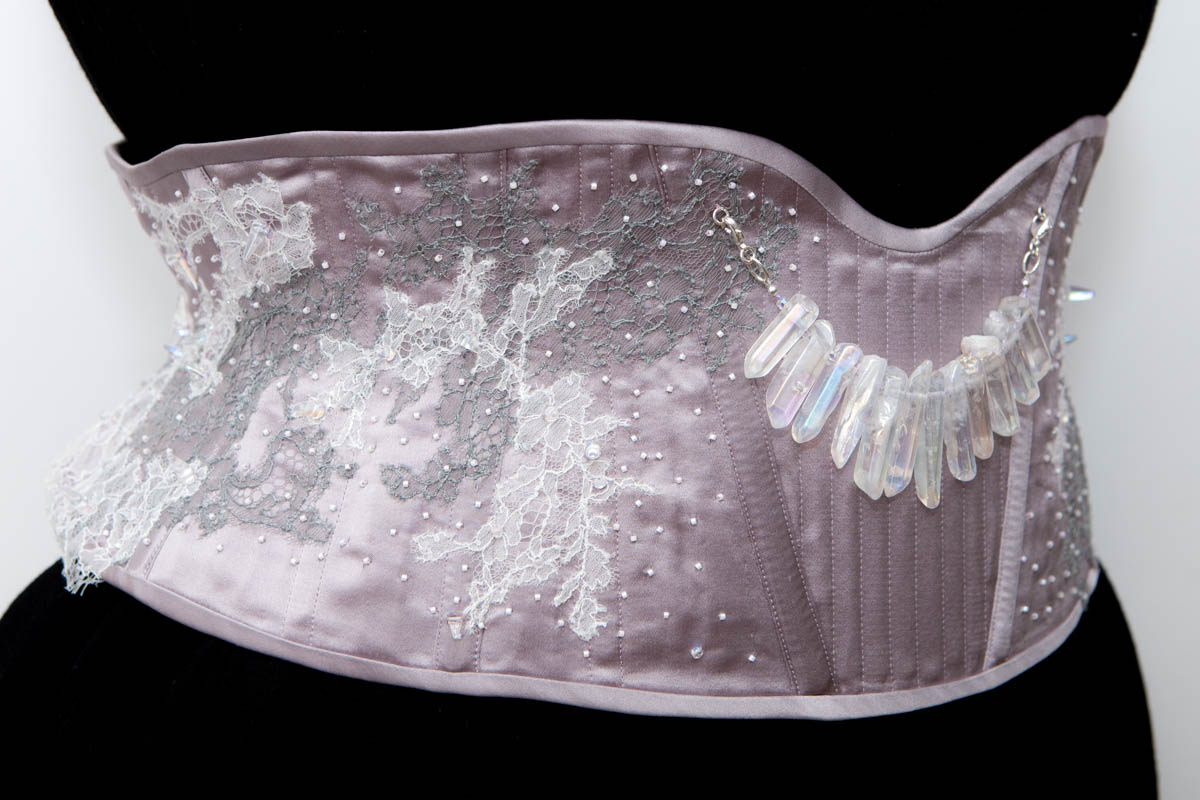
The embellishment techniques on this cincher corset just aren't feasible for RTW: hand stitched lace appliqué, intricate hand beading, and detachable crystal jewellery are techniques I can generally only offer through my bespoke service. Corset by Karolina Laskowska.
It would be foolish to suggest that bespoke services can answer all problems in the lingerie industry when they remain so financially inaccessible for most people. Especially since so many of the large brands that people do have access to are wilfully refusing to expand their size ranges and design options, despite having the resources to do so.
However, for independent designers like myself, bespoke gives as the opportunity to provide customers with exactly what they want: garments that they couldn't possibly find elsewhere, whether due to fit concerns or style preferences. It also allows for a certain scope of design creativity that RTW just doesn't have space for.
If you're interested in a bespoke creation from an independent designer, it is always worth getting in touch to see if they offer the service. Many will offer customisations at no extra charge, and may also be able to offer payment plans. I'm grateful to all the clients who do make that investment with my brand. I just wish it was possible for more people to access the lingerie of their dreams!





